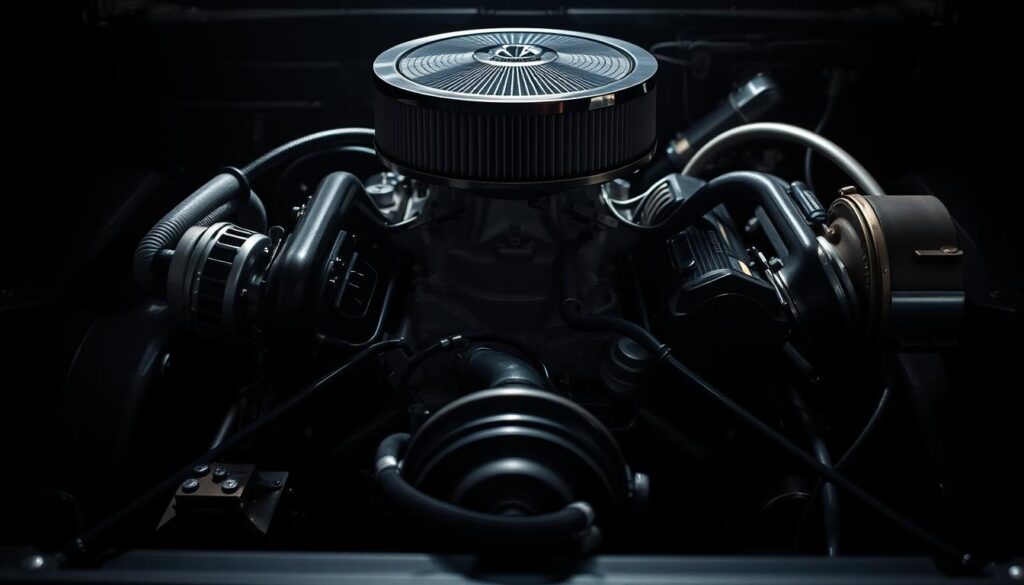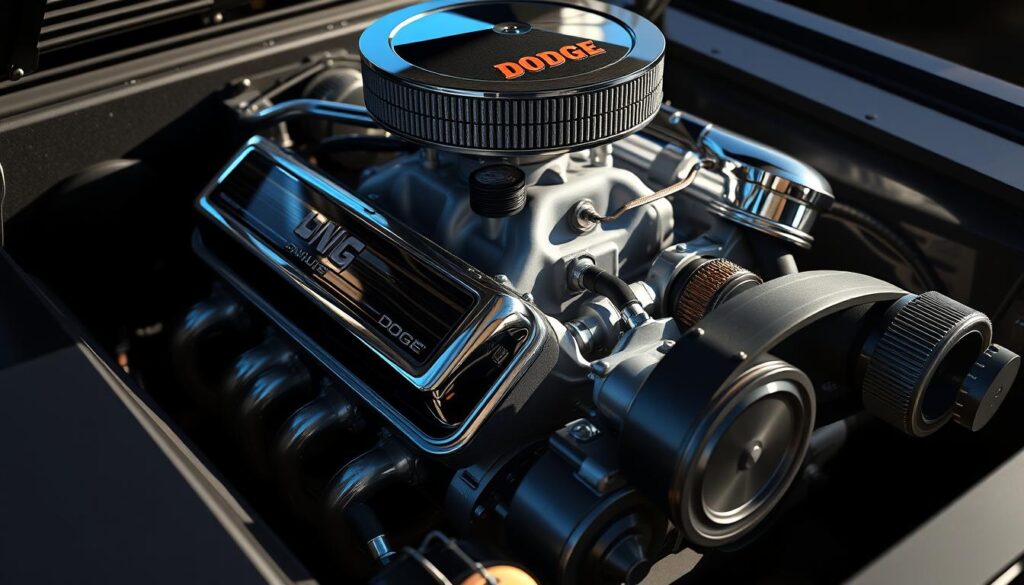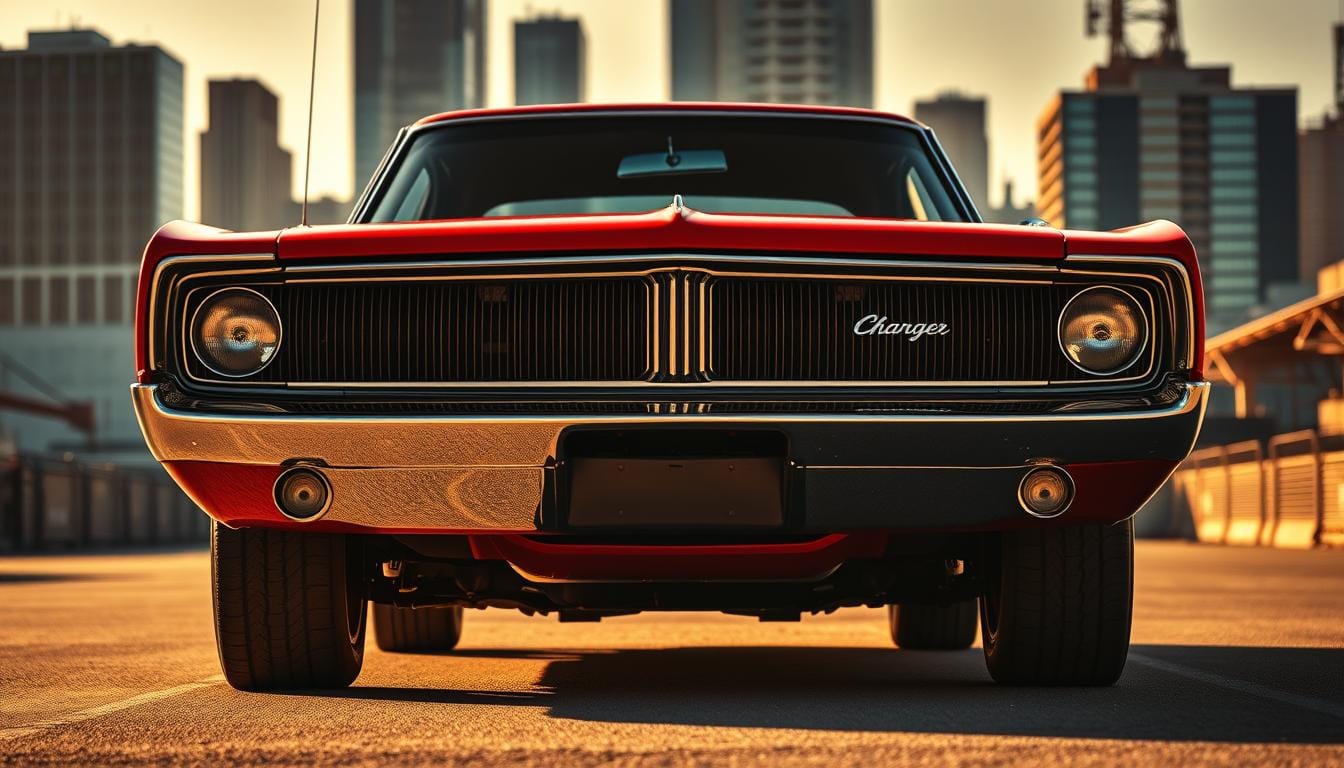1967 Dodge Charger: The Ultimate Muscle Car Guide
Table of Contents
What makes a legendary muscle car stand the test of time? The answer lies in the 1967 Charger, a model that redefined power and style in American automotive history.
This iconic vehicle bridged the gap between family-friendly rides and raw performance. Its sleek design and roaring engine made it an instant favorite among car enthusiasts.
Today, the Charger remains highly sought after in the collector’s market. Its relative affordability compared to later models makes it a smart choice for those entering the classic car scene.
From its revolutionary hidden headlights to its powerful V8 options, every detail tells a story of innovation. This guide explores why this particular year stands out in Dodge’s lineup.
The 1967 Dodge Charger: A Legendary Muscle Car

American roads would never be the same after this engineering marvel arrived. Chrysler’s bold response to Ford’s Mustang created a new benchmark for performance vehicles. The journey from concept to showroom involved remarkable innovation.
Origins and Development
The story begins with a 1964 prototype using the Polara chassis. Engineers faced delays with the powerful Hemi engine, pushing back production. When the first units finally appeared, they wore distinctive yellow paint.
Chrysler targeted younger buyers with sporty features and aggressive styling. The early hemi charger concept showed promise but needed refinement. By 1966, designers adopted the Coronet platform for better handling.
Key milestones in development:
- Competitive analysis against AMC Marlin and Mercury Cougar
- Engineering breakthroughs in engine cooling systems
- Strategic pricing below luxury competitors
First-Generation Charger’s Place in Dodge’s Lineup
The 1967 model year brought significant upgrades, including a 440-cubic inch option. Dodge marketed these vehicles as “sports wagons” blending power with practicality. Unique features like folding rear seats expanded cargo capacity.
Sales figures tell an interesting story:
- 15,788 units sold in 1967
- 96,100 second-generation models moved in 1968
- Clear consumer preference for updated styling
Despite lower numbers, the first-generation cars established Dodge’s performance credentials. Their legacy influenced all future muscle cars from the brand.
Under the Hood: 1967 Charger Specifications

Power met precision under the hood of this American classic. Four engine options catered to every driver, from weekend cruisers to dragstrip dominators. Each variant delivered distinct performance, cementing the car’s reputation as a versatile muscle machine.
Engine Variants and Performance
The base 318ci V8 produced 230 horsepower, ideal for daily driving. Stepping up to the 383ci boosted output to 325hp, while the 440ci Magnum unleashed 375hp. The legendary 426 Hemi ruled with 425hp, hitting 0-60 mph in just 6.5 seconds.
Torque figures varied widely:
- 318ci: 340 lb-ft
- 383ci: 425 lb-ft
- 426 Hemi: 490 lb-ft
Contemporary tests noted the Hemi’s superiority over Ford’s GT500 in quarter-mile time. However, critics highlighted chassis limitations inherited from the Coronet platform.
Transmission and Drivetrain Options
Drivers could choose between rugged manuals or smooth automatics. The base trim paired the 318ci with a 3-speed manual, while others offered a 4-speed. The TorqueFlite automatic became a popular option for its seamless shifts.
Unique features like the console-mounted shifter enhanced the racing vibe. Rear-wheel drive ensured power reached the pavement, though the suspension favored straight-line speed over sharp corners.
Period reviews praised the engine choices but urged updates to the braking system. Standard 10-inch drums struggled with the car’s weight during aggressive driving.
Iconic Design Features of the 1967 Charger
Few automotive designs capture attention like the Charger’s groundbreaking features. Its 108-inch wheelbase and 203.2-inch length gave it a commanding presence, five inches longer than the 1968 model. Every curve and detail was engineered to blend speed with sophistication.
Fastback Styling and Hidden Headlights
The fastback roof line wasn’t just stylish—it reduced drag at high speeds. However, the steep angle compromised rear visibility, a trade-off for aerodynamic gains. Designers prioritized form and function, creating a silhouette that still turns heads today.
Full-width rotating headlights operated via a vacuum system, a rare innovation in its class. When closed, they gave the front end a sleek, uninterrupted look. Owners loved the dramatic effect, though the mechanism required careful maintenance to avoid leaks.
Interior Innovations: Bucket Seats and Console
Inside, vinyl bucket seats came standard, with optional leather or cloth trim. The full-length center console housed gauges and a shifter, emphasizing the car’s sporty ethos. Rear “buddy seats” folded flat, expanding cargo space to 14.1 cubic feet.
Compared to competitors’ bench seats, the Charger’s interior felt driver-focused. Luxury touches like woodgrain accents and a padded dash elevated the cabin. Collectors now prize rare color combinations, such as turquoise upholstery with matching door panels.
Electroluminescent gauges glowed softly at night, another futuristic touch. These details made the Charger feel like a spaceship among cars of its era. Even small choices—like the shortened console in 1968—highlight how thoughtfully this model was designed.
The 1967 Charger in Today’s Collector Market
Valuations tell a fascinating story about rarity and demand in today’s collector scene. The first-generation model stands out for its blend of historical significance and relative affordability. Recent data shows a 30% price spike during the pandemic, with post-2021 stabilization at 5%.
Hemi vs. 383: Valuation Differences
Numbers-matching Hemi models dominate high-profile sales, averaging $119,000 in #2 condition. Their 1968 counterparts fetch 33% more ($158,000), partly due to NASCAR heritage. Meanwhile, 383-equipped models trade at half those figures, appealing to budget-conscious buyers.
Auction results reveal stark contrasts:
| Model | Avg. Sale Price (2023) | Notable Sales |
|---|---|---|
| 426 Hemi | $119,000 | $205,000 (Barrett-Jackson, concours) |
| 383 Magnum | $62,000 | $88,000 (Mecum, restored) |
Rarity and Demographic Appeal
Only 636 Hemi units exist across 1966–1967, with a 12% survival rate. This scarcity fuels competition, especially among Gen X and Gen Z buyers—42% of recent insurance quotes (Hagerty). Younger collectors prize the car’s raw, unrefined character over later models.
Regional demand varies sharply:
- West Coast: Restomods command premiums (+20%).
- Southeast: Original specs favored for nostalgia.
Restoration budgets range from $75,000 for driver-quality to $125,000 for show-ready builds. Garage-kept examples see 15% lower insurance premiums than daily-driven cars.
Restoring a 1967 Charger: Tips and Tricks
Restoring a classic muscle car requires patience, precision, and the right parts. Whether aiming for showroom perfection or a driver-quality build, understanding the nuances separates success from frustration. This guide covers sourcing authentic components and tackling common hurdles.
Sourcing Authentic Parts
NOS (New Old Stock) quarter panels are prized but costly, often exceeding $2,500 due to their complex contours. Reproduction hidden headlight mechanisms offer savings at $1,895—half the price of OEM units. For concours correctness, even fastener finishes matter.
Key strategies for part hunting:
- Prioritize rare components like tail light panels, which need specialist reproduction.
- Compare OEM and aftermarket quality—mechanical parts often favor OEM, while body panels may use reproductions.
- Join Mopar clubs for leads on private sales of discontinued items.
Common Challenges and Solutions
Rust plagues wheel arches and trunk floors. Cutting out rot and welding fresh metal is the only permanent fix. For the engine bay, proper finishes like cadmium plating are critical for originality.
Wiring harnesses degrade over time. Modern updates with improved insulation solve reliability issues without altering aesthetics. The vacuum-operated headlight system, restored by just three certified shops, demands meticulous sealing to prevent leaks.
Budget considerations:
- 426 Hemi rebuilds range from $28,000–$35,000, depending on core condition.
- Refinishing the center console and correct trim colors add authenticity.
- Document every step—photos help during reassembly and boost resale value.
Compared to later models, the 1967’s fastback design poses unique hurdles. Yet, its historical significance makes the effort worthwhile for collectors.
Conclusion: Why the 1967 Charger Endures
This classic car carved its place in history by blending luxury with raw power. Its hidden headlights and fastback design inspired future models, making it a true trendsetter.
Collectors now recognize its value as an underrated gem. Unlike later versions, the first-generation Dodge Charger offers a purer driving experience—less refined but more thrilling.
Market trends show growing interest from younger enthusiasts. They appreciate its bold styling and mechanical simplicity. For those seeking Mopar heritage, this year stands out as a smart investment.
Few vehicles capture the spirit of American muscle so perfectly. Its legacy continues to influence both restoration projects and modern designs.

